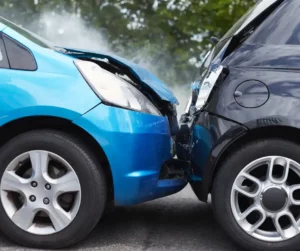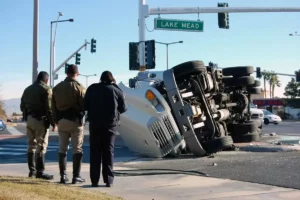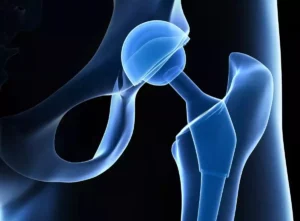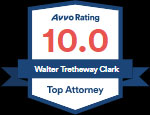*This post was originally published June 14, 2017 and has been updated with new information.
Poorly performing headlights pose a serious safety hazard to drivers and pedestrians. Unfortunately, many vehicles on the market that boast new technologies and features lack this fundamental safety feature.
According to the Insurance Institute for Highway Safety (IIHS), only two midsize SUVs in the U.S. have headlights that are considered “good.” These SUVs are the Volvo XC60 and the Hyundai Santa Fe.
Of the 37 SUVs tested, 12 had “acceptable” headlights, while another 12 were listed as “marginal” and 11 had “poor” headlights.
The following SUVs received a “poor” rating for headlights:
- Infiniti QX60
- Lincoln MKC
- Dodge Journey
- Ford Edge
- Ford Explorer
- GMC Terrain
- Hyundai Santa Fe Sport
- Jeep Wrangler
- Kia Sorento
- Toyota 4Runner
Last year, the IIHS conducted a similar study on midsize cars. Of 31 vehicles tested, the Toyota Prius v was the only one that earned a “good” headlight rating. The following vehicles earned a “poor” rating:
- Buick Verano
- Cadillac ATS
- Chevrolet Malibu
- Hyundai Sonata
- Kia Optima
- Mercedes-Benz C-Class
- Mercedes-Benz CLA
- Nissan Altima
- Volkswagen Passat
Looking at these lists, we see that both luxury and non-luxury vehicles are guilty of having poorly performing headlights. From a Mercedes-Benz to a Hyundai, vehicles across all classes and sizes struggle with headlight safety.
Before we cue the outrage at the automakers, it’s important to look at the bigger picture here. Government regulations allow for huge variation when it comes to the amount of illumination a headlight should provide. Federal regulation also does not require headlight aim to be controlled. Additionally, federal regulators have not approved the use of adaptive driving beam headlights in the U.S.—technology that is readily available in Europe and Japan. These headlights automatically adjust to oncoming traffic, reducing glare and improving visibility for drivers.
Change on the Horizon
Last month, the National Highway Traffic Safety Administration (NHTSA) announced a proposed rule-making to allow the use of adaptive driving beam headlights, in the U.S. These headlights provide better visibility, as they operate at high-beam level by default, and can dim portions of the beam when oncoming vehicles are detected. Thus, they can effectively illuminate the roadway without causing a problem for oncoming drivers.
Toyota petitioned the NHTSA to allow the use of adaptive beam technology on U.S. vehicles in 2013. If the technology is approved, it might still be two years before new standards are implemented. Follow that by another few years before the technology becomes standard in vehicles, and it could be quite a while before adaptive beam headlamps are a reality in the U.S.
Some Automakers Prioritize Style Over Safety
Federal regulation aside, automakers still have a responsibility to make their headlights as safe and effective as possible. Unfortunately, sometimes style takes precedence over safety performance. According to IIHS senior research engineer and headlights expert Matthew Brumbelow, the packaging of headlights has been getting smaller and more distinctive, and many automakers are prioritizing this trend over safety.
Poor Installation to Blame for Some Headlight Issues
Sloppy installation can also be blamed for certain headlight issues. The IIHS says manufacturers need to do a better job of aiming the headlights in the right direction during installation. This can cause light to scatter in the wrong places. With a bit of self-regulation, automakers can easily correct this issue.
Are You Using Your High Beams Appropriately?
One technological development that has helped improve safety on U.S. roadways is automatic high-low beam technology. This feature automatically turns the vehicle’s high beams on when necessary. According to a study by the U-M Transportation Research Institute, drivers only activated their high beams 25% of the time they should have.
Studies also show drivers simply do not understand that high beams are much safer than low beams in most situations. In fact, high beams should be used at all times in the dark, except when another driver is approaching. However, most drivers view high beams as “extra” lighting for extremely dark roadways.
When you consider the fact that low-beam headlights often provide inadequate stopping distance on unlit roadways, the use of high beams begins to make more sense. In fact, a AAA study revealed that low-beam headlights on 80% of vehicles on the road may not provide adequate stopping distance on unlit roads, when vehicles are traveling above 40 mph.
There’s little doubt that improved headlight performance would help reduce traffic fatalities. About half of traffic deaths occur in the dark, or during dawn or dusk. With 2,500 pedestrian deaths at night each year, brighter, more accurate headlights really are a public safety necessity.
“We have come so far with automobile safety, from backup cameras to automatic brake technology. Yet, something as simple as headlight performance continues to pose a safety hazard on our roads. It’s time for automakers and regulators to make headlight safety a priority,” said Attorney Walter Clark, founder of Walter Clark Legal Group.
Our firm has been handling personal injury cases throughout the California Low Desert and High Desert communities for over 30 years. With a 95% success rate, the personal injury attorneys at Walter Clark Legal Group will fight to hold those responsible for your loss accountable and win compensation to cover medical bills, lost wages, and pain and suffering. If you have been injured in an auto accident and want to discuss your legal options, contact us today for a free consultation with an experienced personal injury lawyer. We have offices in Indio, Rancho Mirage, Victorville, and Yucca Valley and represent clients through the entire California Low Desert and High Desert communities.
DISCLAIMER: The Walter Clark Legal Group blog is intended for general information purposes only and is not intended as legal or medical advice. References to laws are based on general legal practices and vary by location. Information reported comes from secondary news sources. We do handle these types of cases, but whether or not the individuals and/or loved ones involved in these accidents choose to be represented by a law firm is a personal choice we respect. Should you find any of the information incorrect, we welcome you to contact us with corrections.
- What To Do If You Have Been Injured At A Concert In California? Mar 27,2024
- Walter Clark Legal Group Reimburses Thanksgiving Ride Fares Nov 14,2023
- Walter Clark Legal Group Donates Backpacks to Booker T. Washington Elementary School Aug 22,2023
- Walter Clark Legal Group Donates Backpacks to Underserved Students Aug 22,2023
- Walter Clark Legal Group Reimburses Labor Day Ride Fares Aug 21,2023
- 2023 Safe Ride Home Program Jun 21,2023





















